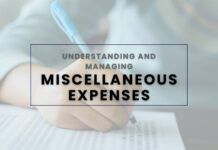Expense receipts are often overlooked in financial management, but they hold immense power in helping you keep track of your expenses and maintain a clear overview of your financial health.
In this comprehensive guide, we will explore the importance of expense receipts and the benefits of using automation to streamline your expense receipt management.
What are Expense Receipts?
Expense receipts are documents that serve as proof of a financial transaction. They typically include details such as the date of the transaction, the items or services purchased, the cost, and the name and location of the vendor. Individuals and businesses commonly use these receipts to track expenses, claim reimbursements, and for accounting and tax purposes.
Employees submit expense receipts to get reimbursement for work-related expenses like travel, meals, or supplies. Businesses rely on receipts for their record-keeping and compliance requirements.
When and How Expense Receipts are Submitted?
Expense receipts are typically submitted when employees are seeking reimbursement for business-related expenses. The process usually involves filling out an expense report with relevant details, such as the date, location, type, category, total amount, vendor name, and account name. The report, along with the receipts and other supporting documents, is then submitted to the appropriate department or manager for verification and approval. This process is commonly followed in manual expense reporting methods or through expense management software.
The Importance of Tracking and Organizing Expense Receipts
Tracking and organizing expense receipts offer numerous benefits that go beyond mere financial management. By staying on top of your receipts, you can:
- Claim Tax Deductions: Expense receipts are essential when it comes to claiming tax deductions. Whether you’re a business owner looking to deduct business expenses or an individual trying to maximize your tax refund, having organized expense receipts ensures you have the necessary documentation to support your claims.
- Maintain Legal Compliance: Many industries and professions require individuals and businesses to keep accurate records of their expenses. By organizing your expense receipts, you can easily comply with legal regulations and avoid potential penalties or audits.
- Analyze Spending Habits: Expense receipts enable you to analyze your spending habits and identify areas where you may be overspending or underspending. This analysis can help you make informed financial decisions and adjust your budget accordingly.
- Streamline Reimbursements: If you frequently incur business expenses that need to be reimbursed, keeping track of your expense receipts can make the reimbursement process seamless. By submitting organized receipts, you can ensure quick and accurate reimbursements, saving you time and hassle.
Types of Expense Receipts
Expense receipts come in various forms, and it’s crucial to be aware of the different types and how to collect them efficiently. Here are some common types of expense receipts you may encounter:
- Paper Receipts: Traditional paper receipts are the most common type of expense receipt. They are typically issued by merchants and contain details such as the date of purchase, item description, and total amount paid. Collecting paper receipts involves keeping physical copies or digitizing them using a scanner or smartphone app.
- Digital Receipts: With the rise of online shopping and electronic payment methods, digital receipts have become increasingly prevalent. These receipts are typically emailed to you or accessible through online platforms. It’s essential to create a dedicated email folder or use a receipt management app to keep track of digital receipts effectively.
- Electronic Invoices: In a business setting, you may encounter electronic invoices for services rendered or goods purchased. These invoices are usually sent via email or accessed through an invoicing platform. It’s crucial to save electronic invoices as PDFs or in a centralized system for easy retrieval and record-keeping.
- Credit Card Statements: Although not traditional expense receipts, credit card statements can serve as a valuable source of information for tracking expenses. It’s important to review your credit card statements regularly, cross-reference them with your receipts, and reconcile any discrepancies.
What Qualifies as a Valid Expense Receipt?
Understanding what counts as a valid expense receipt is a common concern when dealing with reimbursements. Navigating expense reports, reimbursement processes, and tax records can be complex, potentially leading to unforeseen costs in expense claims.
A valid expense receipt should detail the amount, date, location, and nature of the expense. This information serves as proof of legitimate business expenses. Companies require valid proof of purchase to claim tax deductions, confirming that the expense was indeed related to business activities. Examples of valid business expenses for reimbursement include travel expenses, meal reimbursements, mileage expenses, home office expense reimbursements, and relocation expense reimbursements.
Understanding the fundamentals of a valid expense receipt is essential for employees seeking reimbursement and for companies aiming to maintain accurate financial records and comply with tax regulations.
Expense Receipts for Different Expense Category
When it comes to different employee expenses, maintaining clear and comprehensive documentation is essential. Here are the expense receipt requirements for some common expenses:
Meal Expenses: For individual meal expenses, expense receipts could be an original paper receipt from a restaurant, bakery, or supermarket. For company entertainment meals, keep receipts and record the names, companies, titles of guests, and the purpose of the meal for thorough documentation.
Mileage Costs: For mileage receipts employees are often required to submit the fuel receipt with details of the distance traveled. Employers should keep secure copies of this information to support tax filings and reimbursements.
Transport Costs: Documentation for transport costs should include the reason for the trip and relevant tickets, such as flight tickets or contributions to public transport.
Accommodation Expenses: Employers typically need detailed invoices for accommodation expenses, including the number of nights and extra charges charges.
Miscellaneous Expenses: These can include entertainment expenses for client meetings such as season tickets for games.
Streamlining expense reimbursement processes with digital receipts
Expense reimbursement is a critical process in any business, and streamlining it can significantly improve efficiency and employee satisfaction.
The traditional method of submitting expense reports with paper receipts can be cumbersome and prone to delays. Employees need to collect and organize their receipts, manually fill out expense forms, and submit them to the finance department. This process often involves multiple back-and-forths between employees and the finance team, leading to delays in reimbursement and frustration for all parties involved.
By digitizing expense receipts, you can simplify and expedite the entire reimbursement process. Employees can easily capture and submit their receipts using a mobile app or web interface, eliminating the need for paper receipts and manual data entry. The digital receipts are automatically linked to the corresponding expense reports, making it easy for the finance team to review and approve expenses. This streamlined process reduces errors, speeds up reimbursement, and improves employee satisfaction.
In addition to streamlining the reimbursement process, digital receipts also provide valuable insights into your business expenses. Most receipt scanning tools offer reporting and analytics features that allow you to track spending patterns, identify cost-saving opportunities, and make informed financial decisions. With real-time visibility into your expenses, you can proactively manage your budget and drive financial success.
A Way Forward
The Peakflo Travel and Expense Management Solution is a comprehensive platform that simplifies expense receipt management. It allows you to capture, categorize, and store receipts digitally, eliminating the need for manual record-keeping.
With features like real-time expense tracking and streamlined expense report generation, Peakflo provides a seamless experience for managing your expense receipts. So, take the first step towards streamlined travel and expense management and start harnessing the power of digitization.









![Why AI Sales Calls Are Making Good Sales Reps Even Better [2025 Guide] ai sales calls](https://cdn-kmjmp.nitrocdn.com/YvtqmrsiHUxqerlSiZgbfzqqTARWTElr/assets/images/optimized/rev-834053b/blog.peakflo.co/wp-content/uploads/2025/09/65168cf6-3001-4733-8cbc-12d5684cf449-218x150.webp)

































